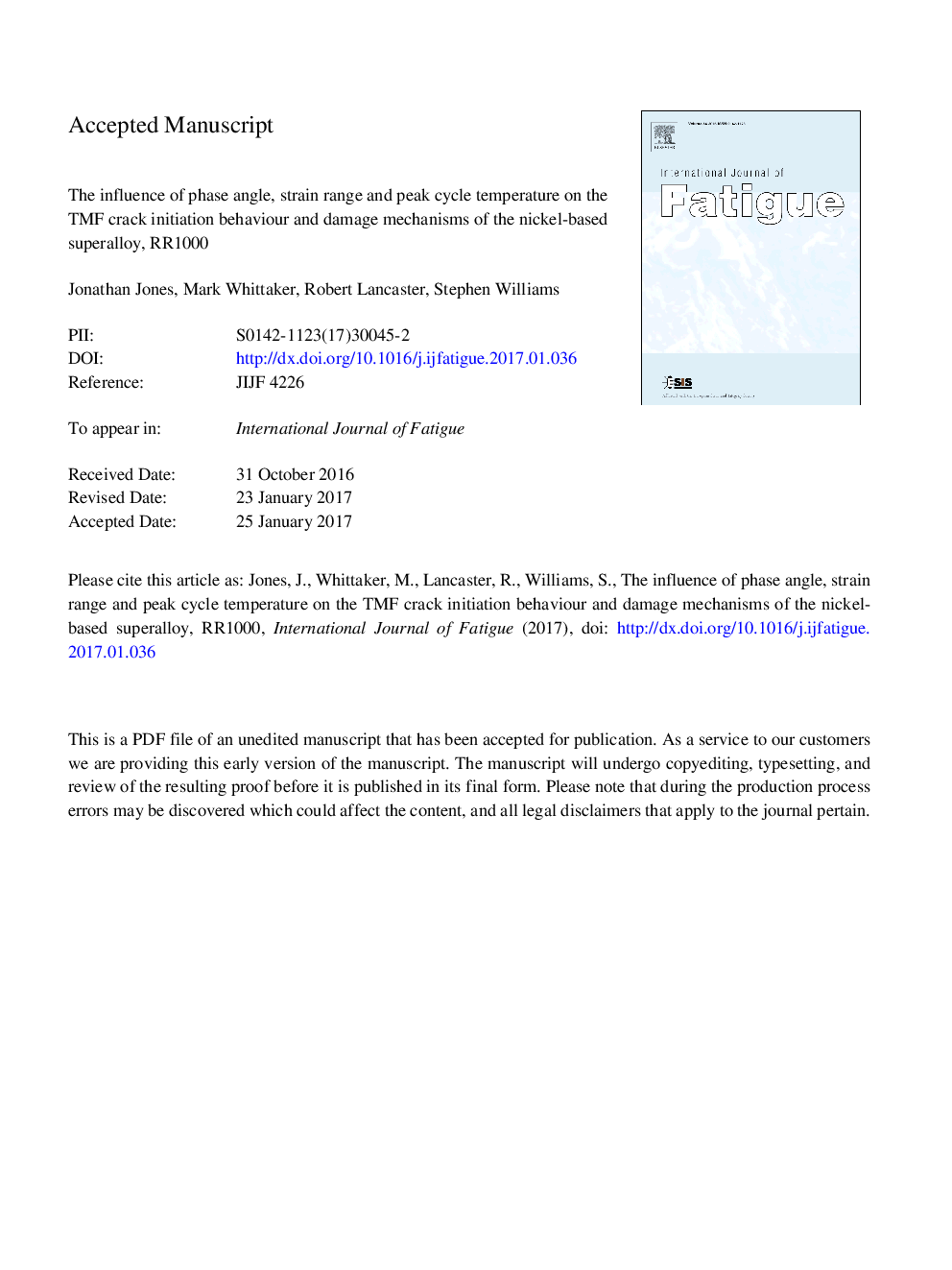| Article ID | Journal | Published Year | Pages | File Type |
|---|---|---|---|---|
| 5015240 | International Journal of Fatigue | 2017 | 20 Pages |
Abstract
Thermo-mechanical fatigue (TMF) tests including 0°, 90°, â90°, 45° â135° and â180°, phasing (Ï) between mechanical loading and temperature were undertaken on a polycrystalline nickel-based superalloy, RR1000. Mechanical loading was employed through strain control whilst 300-700 °C and 300-750 °C thermal cycles were achieved with induction heating and forced air cooling. Mechanical strain ranges from 0.7 to 1.4% were employed. Results show that, for the strain ranges tested, TMF life is significantly affected by the employed phase angle. Furthermore the strain range and peak cycle temperature used has a substantial influence on the significance of dominant damage mechanisms, and resultant life. Various metallographic examination techniques have outlined that the dominant damage mechanisms are creep deformation at higher temperatures and early cracking of oxide layers at lower temperatures.
Related Topics
Physical Sciences and Engineering
Engineering
Mechanical Engineering
Authors
Jonathan Jones, Mark Whittaker, Robert Lancaster, Stephen Williams,
